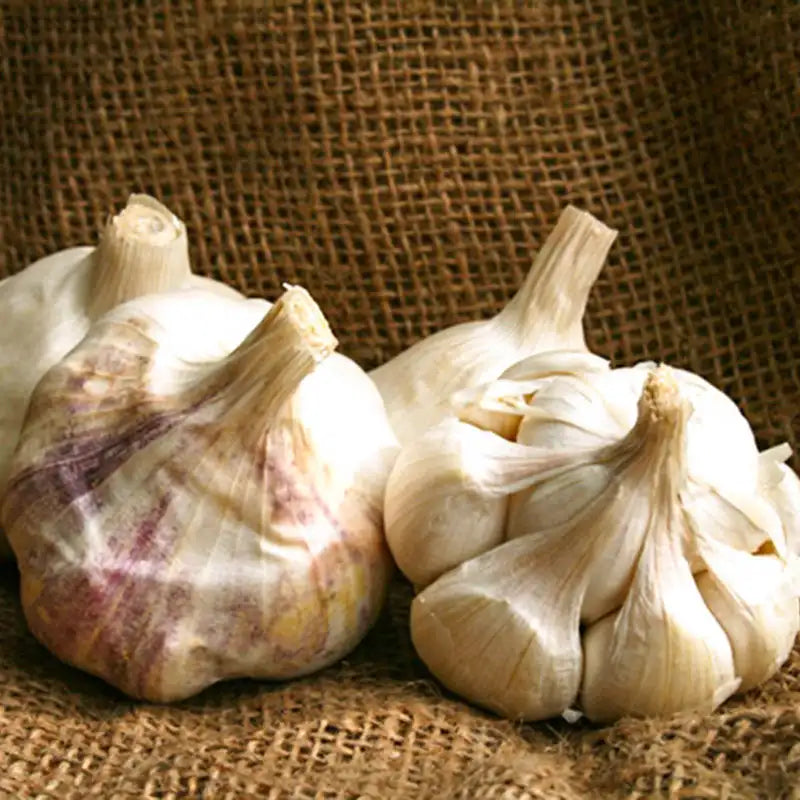Hey Gardener: Leave those plants alone!
Q. Valerie from Waterloo, Ontario Canada writes: “I always plant garlic on Oct 15th; and this year, the little green sprouts came up in December. The weather stayed warm for awhile, but then turned cold and the little sprouts got covered with lots of snow. Then a warm early spring melted the snow and the sprouts were looking good. Then it got really cold; between minus 10 and minus 17 Celsius every night. (That’s single digit temperatures in Fahrenheit land.) I was getting ready to put blankets over the sprouts, but then I read one of your articles that assured me I didn't need to. Thank you!”
On the OTHER hand:
Q. Gene in Cherry hill, New Jersey writes: “How will I know when my garlic is ready to dig up if the sprouts died over winter? They were about six inches tall when the forecast said temperatures would drop down into the 20's. I had bagged up a lot of fall leaves and basically just buried the garlic sprouts under a pile of heavy wet leaves. When the weather warmed up, I removed the leaves and there were no sprouts. It’s already April and still no sign of sprouts. I have a feeling I may have snuffed them.
PS: To make things worse, the garlic was a Florida variety.”
A. Let’s begin with the mysterious reference to “Florida garlic”, a term I had never heard before; but the all-knowing Google revealed that the annual South Florida Garlic Festival was held back in February. (What’s their slogan? “Come for the Beaches; Stay for the Cloves”?!) Anyway, it turns out that there are quite a few sites devoted to Florida Garlic Growing, and as expected, all suggest growing soft-neck varieties (aka ‘California garlic’), which do well with less of a chill over winter and store well after harvest.
But true garlic lovers (who appreciate the wild wrapper colors and superior flavor of hard neck garlic) who are forced to grow in mild winter areas but shun the lesser taste of soft neck garlic can chill their hard neck bulbs in the fridge several months before planting, to simulate the real winter they won’t be having, but that hard neck garlic loves. (Look to your local State Extension website for suggested planting and harvesting times.)
(Note: As with similar citizen science ventures, such as forcing Spring bulbs and the like, the fridge must be fruit-free to prevent accidental early sprouting of the chilled bulbs.)
But one would suspect that growing a tender variety of garlic in New Jersey would cause it to suffer greatly during really cold winter stretches. Plus, anxious soft-neck grower Gene appears to have sealed the deal by smothering the suffering plants under layers of wet, heavy, whole leaves, whose role in nature is to smother competitive plants trying to grow on the forest floor, not help them. As a mulch, whole leaves become a killer tarp, not any kind of protection. (Which is why we beg you every fall to shred all of the leaves you intend to use as summer and winter mulch; once shredded, those leaves become one of the best and safest mulching choices of all.)
Now; let us take a moment to emphasize one of the Cardinal rules of gardening: Leave it alone! If you don’t know what you’re doing, don’t do it! (And don’t pick at it!) If the plants in question are rated winter hardy in your area, the only thing they need to be rescued from is your anxiety.
If an ice storm is predicted, do not attempt to ‘defensively’ prune your trees and shrubs; they have survived countless weird weather events. But like garlic and Spring bulbs, they cannot defend themselves from anxious humans with too much time on their hands.
“Case in point” (a phrase that Rod Serling always announced so perfectly): We have had very little snow for the last several years in my little town, where the women are strong, the men think they are handsome, and all of the tomatoes are above average. Then came a prediction that a large amount of snow was coming.
This time, the professional weather-guessers were correct. I had three plots of garlic in raised beds that were hidden from my sight for two months.
When the ice and snow finally melted, it looked like the garlic had been through a war. I did nothing. And now it looks fabulous. During a warm stretch that followed, they received a light organic feeding as a reward for not being dead. (I’ll do the same feeding for my Spring bulbs after their flowers fade.)
Basic rules of mulching. The time to apply mulch for winter protection is right after the ground freezes hard for the first time. And the best mulches are shredded leaves or pine straw; they protect while allowing the ground to breathe. And whatever you do, don’t even consider the wood chip dump truck of death.
Never cover plants with blankets for any reason; the wet and frozen blankets would soon crush the poor plants. If cover you must, use a breathable fabric like sheer curtains or professional row covers, like Reemay. But not on your garlic. It don’t need it.


